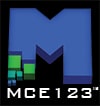This invention concept pertains to an IDEAINT Immersive Environment that has visual geospatial views, and plays surround sound audio to any user, through their mind, with a brain to computer interface technology, specifically using Optogenetics Sequencing Technology.
Examples of how this immersive environment uses other intelligence systems, is that it uses an OBJECTINT artificial intelligence engine, that stores the locations and properties of all objects around the world, detected through stereoscopic mass-spectrometry surveillance satellites, which digitally scan the materials and store the results in a master database, that can be used to track object movements, or material makeups, and build three-dimensional models of the objects in the immersive environment with three-dimensional graphics that represent the real world, including by scanning and representing the true colors of objects, applied to the OBJECTINT data that was gathered using mass-spectrometry satellite technology, to detect the key dimensions of each object, and scan the object into a represented three-dimensional model in the computer systems.
Software interfaces include support for law enforcement, such as find a vehicle, find a person, and find a location, such as a building, which could all be mapped out in a desktop computer program with three-dimensional models that look like a perfect 2Advanced Studios artwork scene, in every view, showing every building perfectly, including perfect trees and bushes everywhere, and also have a layer that is a future improvements layer, which includes future improvements that people living or buying the locations were going to accomplish with the properties. These views could be represented in a product like Google Earth, someday, which was originally Keyhole Viewing Software, which takes satellite photography and other satellite data and coverts it into a three-dimensional model of the planet, including the buildings and streets. The new view would be real-time, and would include people, and animals, and plants, in addition to all structures, even radio frequency towers and airplanes would be represented by a three-dimensional model that looks like the real-time object, which could be protected by user-level security, to only show sensitive data to authorized U.S. government employees.
Other views include a map view, that looks down from a satellite top-view perspective, showing a street view that is three-dimensional, raising upwards, and showing three-dimensional models, however also showing the street view in a raised up horizontal plane or “cloud window” that the plane of the window shows up like a picture frame over the ground, its self, raised up to show the street view. Another view shows the street view to map out how to get to a destination, and the view of the street view is a little three-dimensional map that is located off to the side of the panoramic view, including of the optical channel in the views, however the window shows directions, including in-place three-dimensional signaling on a visual overlay, to show which directions to turn or go straight on the current roadways that are being travelled on. There is a convenient tail gate mode, which ensures that the tracker can go for a cup of coffee or a smoothie or bagel or bite to eat, really quick, and still catch up on what the person of interest is doing, to locate them later, by tracking them with The Satellite Technology, including getting directions and being able to view what they are doing in three-dimensional stereoscopic view, even in the background while performing other tasks in the visual environment, such as computer tasks, with a three-dimensional map of the area in the greater panoramic background, all while doing errands, locally.
Another view is the ability to show jet aircraft, such as in a nation, that shows the pilot in stereoscopic views, and also identifies the lettering on the aircraft, in The Visual Environment, properly through using The Satellite Technology, or IDEAINT Satellite Technology, to communicate the views and any corresponding audio or music to the brain, directly, using Optogenetics Sequencing Technology.

















